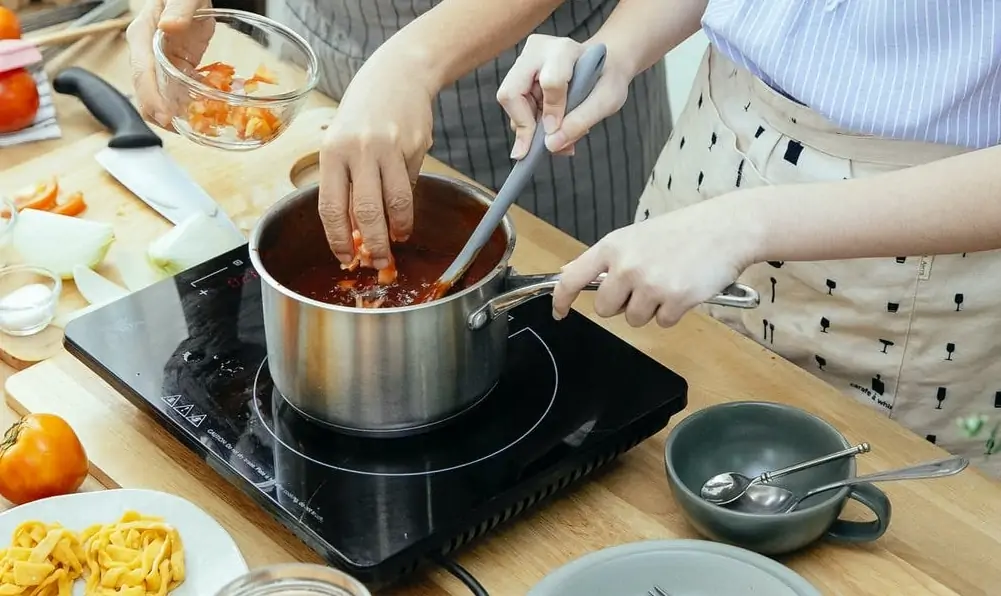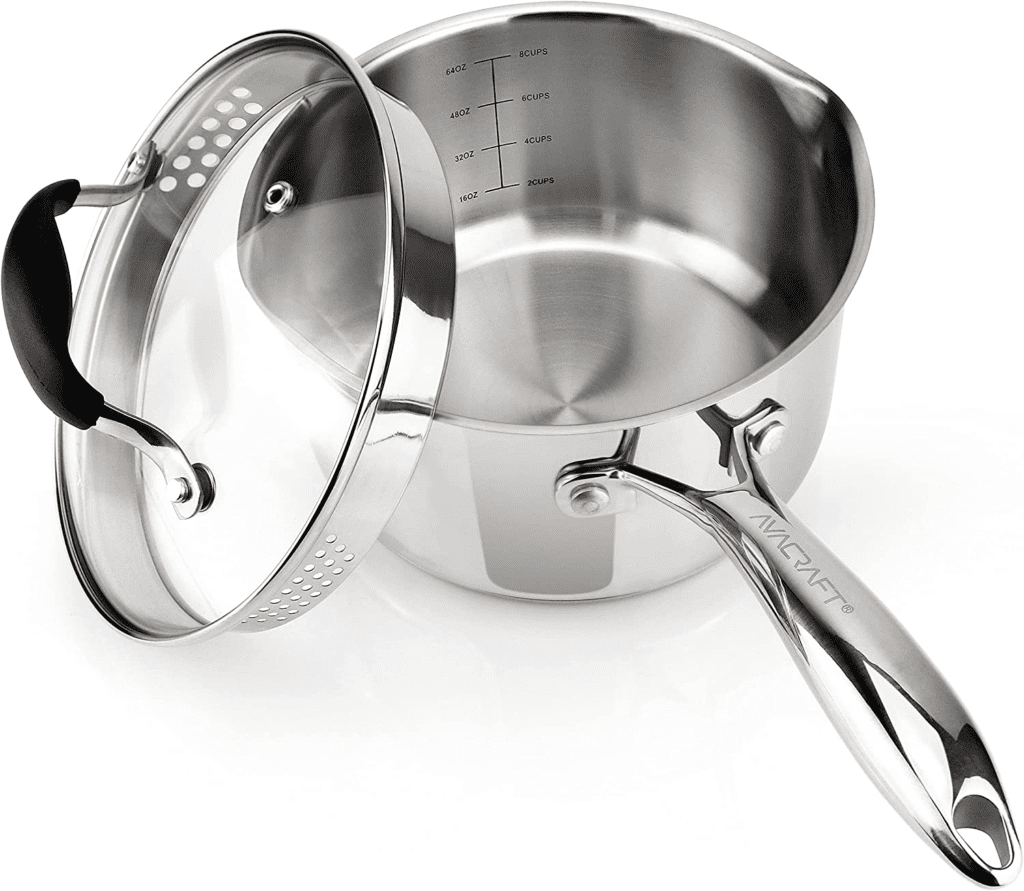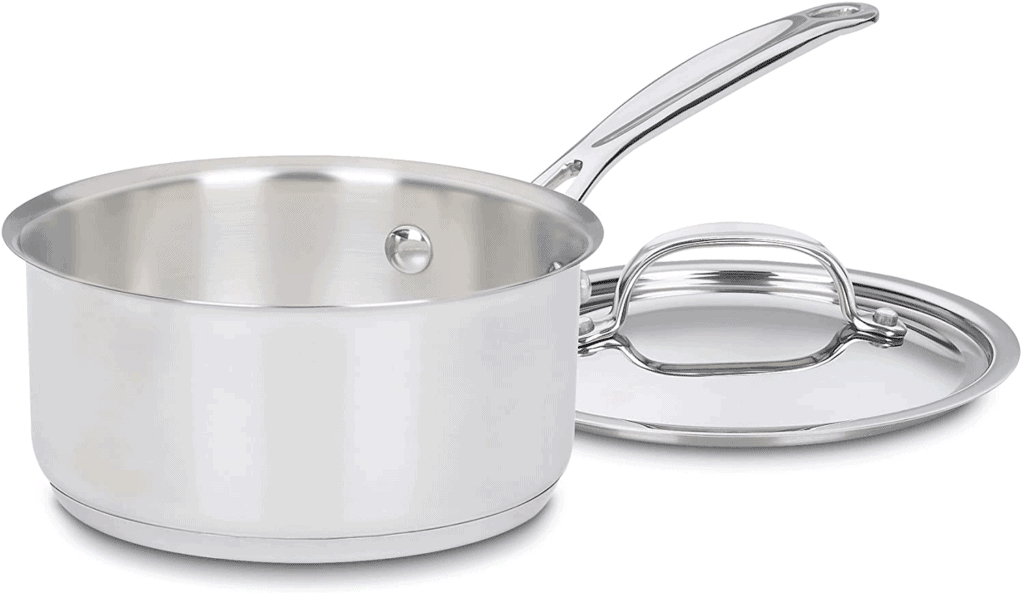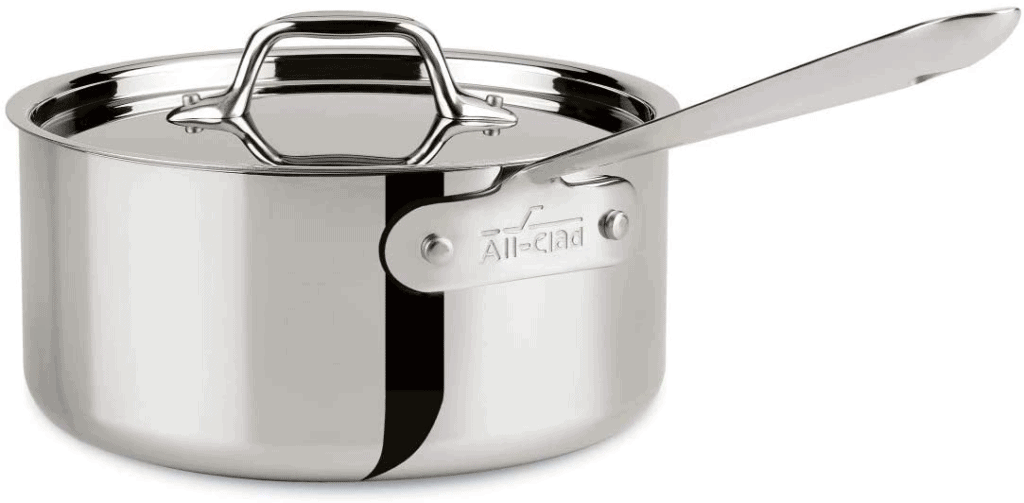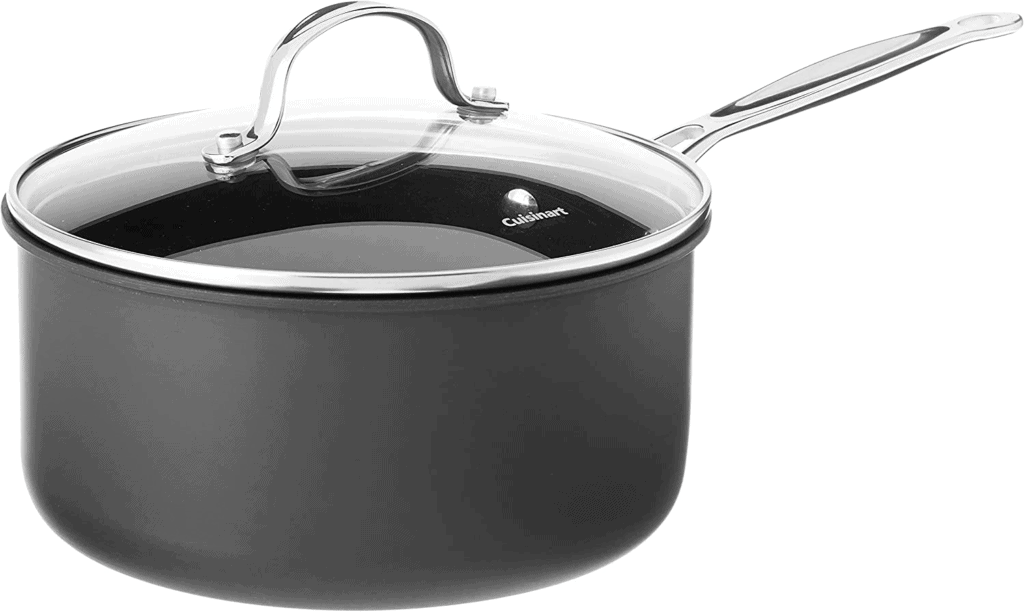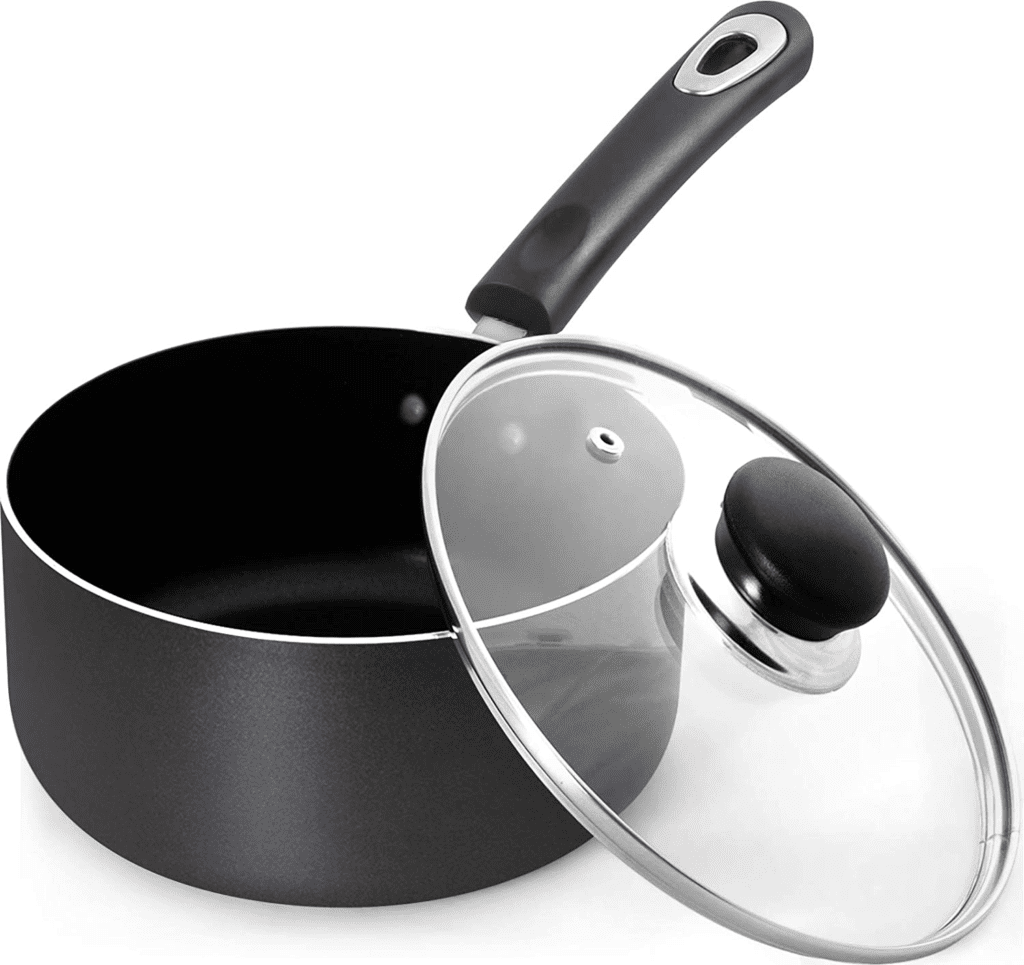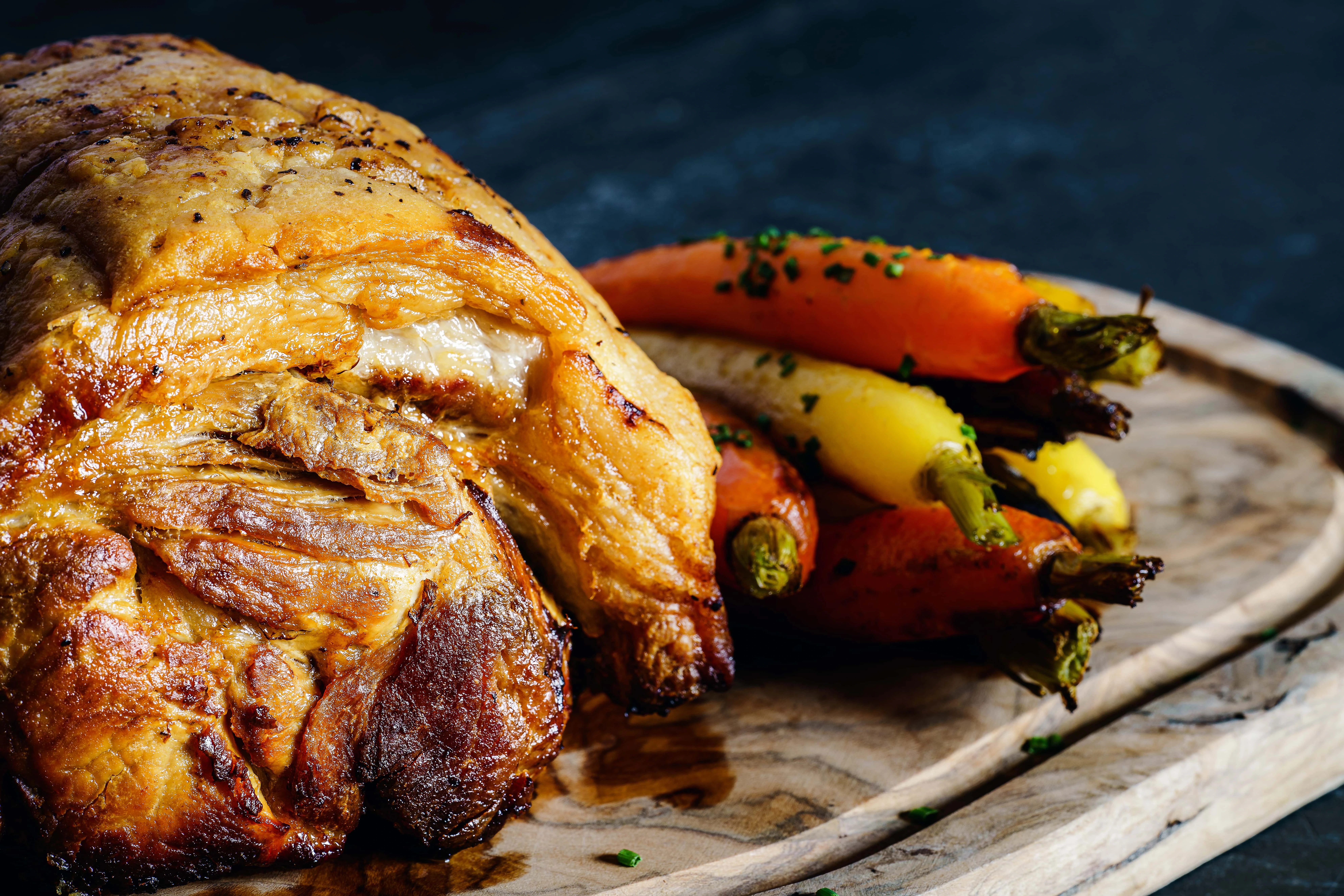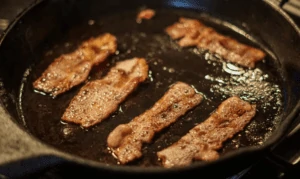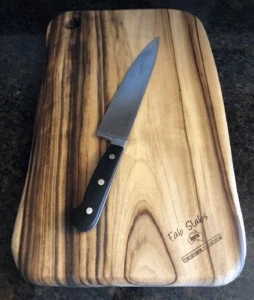If you are heating any liquid, the saucepan should be your first choice in cookware. Saucepans are a staple in professional kitchens and home kitchens alike for both their dependability and versatility. And, if you take care of this pan and treat it well, it can last a lifetime.
If you don’t already own one, you should! There are a ton of everyday cooking tasks that a saucepan can accomplish with ease. Are you hard boiling eggs? Making a sauce for spaghetti night? Heating soup for a cold winter’s day? These tasks, and more, can all be done with a trusty saucepan.
This buying guide can help you if you’re looking to learn more about what saucepans are and get some recommendations for ones you can buy. We’re walking through all of the details here, so you can make a purchase fully informed.
Ready to learn? Let’s get started!
What is a Saucepan?
The saucepan is a beloved piece of cookware! Any good cook knows that when working with sauces, or any liquids, a saucepan is the tool for a job.
At a glance, a saucepan might seem similar to pieces of cookware like pots or sauciers, but some features make the saucepan stand out. A saucepan is a pot with a small base, tall sides that give the pot depth, and a single handle.
The tall sides give the saucepan its depth and make it so good at what it does. Saucepans quickly and evenly heat sauces, hitting them with heat from both the base and the sides of the pan.
The single attached handle should remain cool to the touch. When cooking with sauces, you need to control your heat to avoid scorching or burning your sauce. The handle and small size allow this pot to easily be maneuvered on and off the heat, giving the cook excellent temperature control.
The average saucepan is quite small in size. Normally, these pans can hold 2-3 quarts of liquid. The small size aids the pan in being easily maneuvered, which is useful when pouring and transferring out its liquid contents.
A saucepan is versatile, acting as a sort of combination between a pot and a frying pan. They heat smaller portions of sauce and liquids quickly, making them great in professional kitchens, which may need to make a small amount of sauce for individual dishes, and transfer them from the cookware to the plate quickly.
What Can I Cook in a Saucepan?
A saucepan is the perfect tool for heating and cooking anything liquid.
These pans are, obviously, a good choice for making sauces. You can make any of the 5 mother sauces in a pan like this, as this is what this pan was designed to do.
It’s also great for heating liquid beverages fast and easily transferring them to drinking vessels. Next time you’re boiling water for coffee, tea, or hot chocolate, you can try to do it in your saucepan.
These pans are good for boiling smaller quantities of food as well. If you’re making dinner for one, your saucepan can handle boiling a few potatoes, a portion of pasta, or grains like quinoa.
Though you have to be safe while doing so, a saucepan can also handle some minor deep frying. The depth in this pan makes it adept at evenly heating oil, and has enough room to get items submerged. You won’t be able to fit larger pieces of meat or vegetables in this pan for deep frying, but you can try small quantities of fries, shrimp, or other smaller foods.
Saucepan Buying Guide
Going into saucepan buying without knowing what you’re looking for can have you walking away with something you didn’t exactly want. It’s best to be informed! Our buying guide below outlines all the things you should keep in mind before you buy:
Materials
The material your pan is can make a huge difference. Different metals have different properties, changing your ability to heat evenly, retain heat, stay nonstick, and more. The pan you buy should have a material that aligns with your cooking style.
Most saucepans will be made of or contain aluminum as it’s a great conductor of heat. Normally, the aluminum is wrapped in, or paired with, stainless steel. Stainless steel is a super common cookware material due to its durability and rust resistance. This material is great, but it isn’t nonstick. You’ll have to take care to constantly stir while cooking so ingredients don’t burn to the bottom of your pan.
However, many stainless steel pans will come with a nonstick coating. These are great and can make cooking a breeze. They do tend to scratch and damage easily, though. If you have a nonstick saucepan, use silicone or plastic utensils and hand wash to preserve the non-stick lining.
Some pans may also have copper bottoms or be made entirely of copper. Many cooks swear by copper for its conductivity. Copper can heat up easily, and cool down fast when removed from its heat source. This can be good in cooking trickier sauces, where heat control can make a huge difference in the cooking process.
Size
As we mentioned above, the average saucepan comes in a 2 quart or 3-quart size range. This is a great size for making portions for 1 to 2 people when making things like soup or boiling pasta. It holds enough gravy and sauce for up to 4 to 5 dishes, depending on how saucy you like to get.
Sticking to this size range will give you the perfect saucepot for the average home. If you’re looking for something to prepare sauces for much larger groups, you may want to go for something larger like a stockpot.
Handle
You’ll want to find a handle that is comfortable and, most importantly, heat resistant. The handle needs to be used to quickly take your saucepot on and off the heat while cooking. If it’s heat resistant, you won’t have to worry about burning your fingers when you want to make a move!
As saucepots only have one handle, it’s important to make sure it is super stable and securely attached. Picking up a saucepot and having the handle fall off mid-movement would be an absolute disaster to clean and could lead to burns. Try to look for handles with a flush rivet that is smooth and securely screwed into the side of your pan.
Lids
A saucepan needs a good lid to help keep the heat in. Most lids that come with saucepans will be stainless steel and glass. Glass lids are great as they provide visibility to the inside of your pan while still keeping the heat trapped inside.
However, glass can be temperamental, fragile, and shatter when exposed to high heat, which is why some people prefer solid steel lids. But, these don’t have the advantage of giving you visibility inside the pan while it’s still on.
You should also make sure the lid handle is heat resistant for safer cooking. Lid handles can get hot fast and easily burn you if you don’t handle them with care. Another feature to look for is small holes on the surface of your lid to let steam escape during cooking.
Our Picks for the Best Saucepan
Are you ready to shop? We have some amazing product recommendations outlined below! Let’s take a look at some of the best saucepans you can buy.
1. Top Recommended Product: AVACRAFT Stainless Steel Saucepan with Glass Lid
BUY HERE
Here you’re getting a 2.5 QT stainless steel saucepan and shatterproof glass lid cover. It’s the extra features, though, that make this pan truly great.
The lid for this pan has a silicone grip for heat-safe handling and a handy hole on the lid to let steam escape. It also comes with pour spots on either side of the lid to make draining water from boiling vegetables or pasta easy!
The pouring happens with the convenient pour spout located at the side of the pan. This not only makes straining out water easy. It also makes transferring sauces into other bowls or plates a breeze.
To help you cook, there are also convenient measuring marks on the inside of the saucepan. Now you can measure out your ingredients with no measuring cup needed!
2. Best Budget Product: Cuisinart 719-14 Chef’s Classic Stainless 1-Quart Saucepan with Cover
BUY HERE
This 1-quart saucepan from Cuisinart gives you professional quality cookware at a reasonable price. This solid stainless steel pan has an aluminum core for fast and even heat distribution. It also has a good grip, stainless steel handle, and matching solid lid.
The tapered lid and edges make pouring from this pan super easy, which is great when working with liquids! While this isn’t as large as some other saucepans on our list, it’s still a solid choice for those looking to try one.
3. Best Premium Product: All-Clad 4203 Stainless Steel Tri-Ply Bonded Dishwasher Safe Saucepan with Lid
BUY HERE
This saucepan defines fine cookware craftsmanship. It is tri-ply bonded stainless steel with an aluminum core to help it efficiently and evenly maintain heat. It has a secure, cool touch stainless steel handle and a matching, tight-fitting lid.
This saucepan is compatible with all cooktops, and it’s even oven and broiler safe! There are a ton of things you can do with this high-quality saucepan.
4. Best 3 Quart Saucepan: Cuisinart Chef’s Classic Nonstick Hard-Anodized 3 Quart Saucepan with Lid
BUY HERE
You may have specific sizing in mind while saucepan shopping. If you’re looking for a saucepan that is 3 quarts in size, this one from Cuisinart is perfect.
This aluminum pan has a durable nonstick coating. If you’re worried about food burning and sticking, it’s no issue in a pan like this. It also comes with a cool-touch steel handle and a glass and steel handle lid. It’s sure to become your go-to saucepan!
5. Best 2 Quart Saucepan: Utopia Kitchen 2 Quart Nonstick Saucepan with Glass Lid
BUY HERE
Need a 2-quart saucepan? Try this one from Utopia kitchen! This aluminum non-stick lined saucepan is double-coated, making it more resistant to scratches and damage.
This saucepan also has a heat-resistant bakelite handle and a glass lid with a cool-touch knob. The pan is also dishwasher safe for easy cleanup.
Saucepan FAQ
We have all the answers to your saucepan questions! Here are the most frequently asked questions people have when learning about saucepans:
What are saucepans used for?
While saucepans were designed with sauce in mind, they are used for heating and cooking up any liquid in the kitchen.
When you think of liquid in the kitchen, of course, the sauce is the first thing on the list. The other liquids this pan can cook include things like soups, teas, boiling foods, and even heating oil for deep frying.
How do I clean a burnt saucepan?
Most saucepans are not nonstick and are prone to having food stick and burn to the bottom during cooking. You can avoid this with constant stirring, but if the damage is done, try the following.
Add some water to cover the base of the pan. Add a half cup of baking soda, and stir. Then, put the saucepan on low heat, bringing the water and baking soda to a simmer. Let it do this for 5-10 minutes, then remove from heat, and use a scraper to pick at the burnt bits. They should now scrape free easily!
After the burnt part is scraped up, hand wash your pan as normal, and you’re done.
Can I wash a saucepan in the dishwasher?
The answer to this question depends on your specific pan. Always check your manufacturer’s instructions before putting any cookware in the dishwasher. If your pan is dishwasher safe, feel free to toss it in! However, to increase the longevity of your pan, a gentle hand wash can be more ideal.

